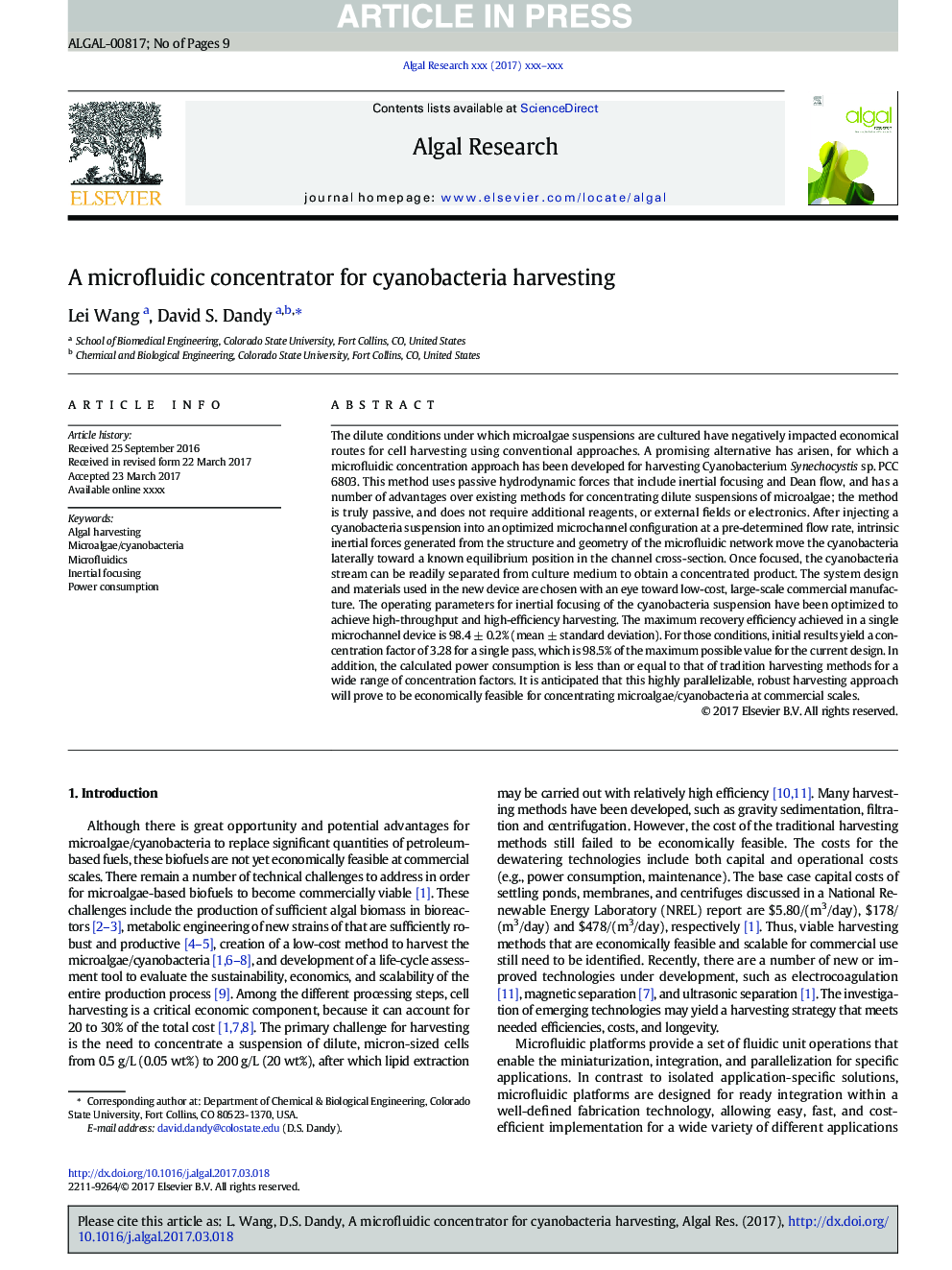| Article ID | Journal | Published Year | Pages | File Type |
|---|---|---|---|---|
| 5478317 | Algal Research | 2017 | 9 Pages |
Abstract
The dilute conditions under which microalgae suspensions are cultured have negatively impacted economical routes for cell harvesting using conventional approaches. A promising alternative has arisen, for which a microfluidic concentration approach has been developed for harvesting Cyanobacterium Synechocystis sp. PCC 6803. This method uses passive hydrodynamic forces that include inertial focusing and Dean flow, and has a number of advantages over existing methods for concentrating dilute suspensions of microalgae; the method is truly passive, and does not require additional reagents, or external fields or electronics. After injecting a cyanobacteria suspension into an optimized microchannel configuration at a pre-determined flow rate, intrinsic inertial forces generated from the structure and geometry of the microfluidic network move the cyanobacteria laterally toward a known equilibrium position in the channel cross-section. Once focused, the cyanobacteria stream can be readily separated from culture medium to obtain a concentrated product. The system design and materials used in the new device are chosen with an eye toward low-cost, large-scale commercial manufacture. The operating parameters for inertial focusing of the cyanobacteria suspension have been optimized to achieve high-throughput and high-efficiency harvesting. The maximum recovery efficiency achieved in a single microchannel device is 98.4 ± 0.2% (mean ± standard deviation). For those conditions, initial results yield a concentration factor of 3.28 for a single pass, which is 98.5% of the maximum possible value for the current design. In addition, the calculated power consumption is less than or equal to that of tradition harvesting methods for a wide range of concentration factors. It is anticipated that this highly parallelizable, robust harvesting approach will prove to be economically feasible for concentrating microalgae/cyanobacteria at commercial scales.
Related Topics
Physical Sciences and Engineering
Energy
Renewable Energy, Sustainability and the Environment
Authors
Lei Wang, David S. Dandy,
